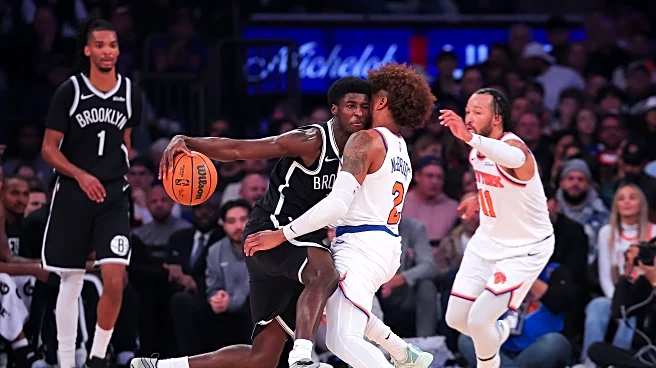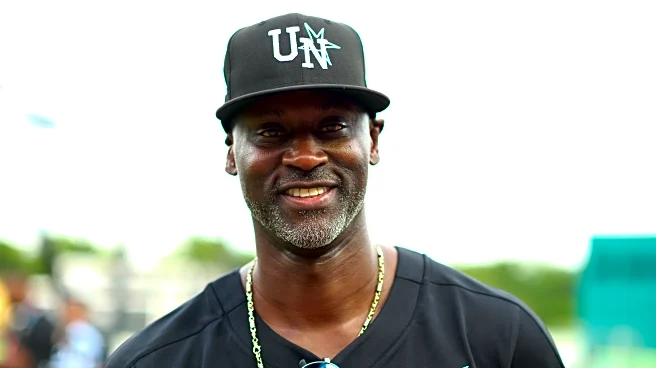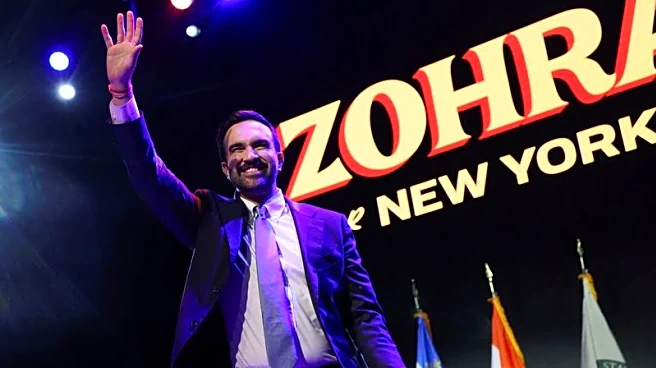What's Happening?
Laura Ortman, a contemporary violinist based in Brooklyn, is gaining recognition for her unique blend of classical technique and Indigenous influences. Ortman, who has been in New York since 1997, draws inspiration from the city's vibrant sounds, including
the subway, which she incorporates into her music. Her early studies included mastering the Apache violin, a traditional instrument from her tribe made from agave plant stalks, which contributes to her distinctive sound. Ortman's performances are known for their experimental nature, as she aims to evoke different moods and feelings, often improvising with scores and passages she has memorized. Her style is equally eclectic, featuring vivid tops, Indigenous-made jewelry, and sequin mini skirts, allowing her to move freely during performances.
Why It's Important?
Ortman's work highlights the intersection of Indigenous culture and contemporary music, offering a platform for cultural expression and innovation. Her approach challenges traditional norms in classical music, promoting diversity and inclusivity within the arts. By incorporating elements of her heritage, Ortman not only preserves cultural traditions but also introduces them to broader audiences, fostering greater appreciation and understanding. Her success in the competitive New York music scene underscores the potential for Indigenous artists to influence mainstream culture, encouraging other musicians to explore and integrate their cultural backgrounds into their work.
What's Next?
As Ortman continues to perform and evolve her craft, she may inspire other artists to explore their cultural roots and incorporate them into their music. Her influence could lead to increased representation of Indigenous artists in the music industry, potentially sparking collaborations and new genres. Ortman's ongoing search for unique performance attire, such as her recent acquisition of a white leather jacket in Texas, suggests she will continue to blend her personal style with her musical expression, further solidifying her identity as a distinctive artist.
Beyond the Headlines
Ortman's journey reflects broader cultural shifts towards embracing diversity and challenging conventional artistic boundaries. Her work raises questions about the role of cultural heritage in contemporary art and the importance of preserving traditional practices while adapting them to modern contexts. As more artists like Ortman gain visibility, there may be increased dialogue around cultural appropriation, authenticity, and the responsibilities of artists in representing their heritage.
















